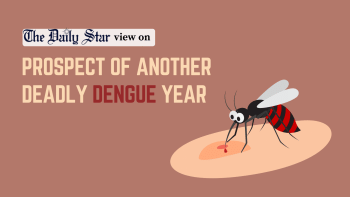How to rank mayors of an unliveable Dhaka?

The two Dhaka mayors may be patting themselves on the back for doing a good job of maintaining the capital city during their four-year tenure, but the statistics—to say nothing of city dwellers' individual experiences—tell a different story. Over the period, Dhaka has consistently found itself among the top 10 least liveable cities in the Global Liveability Index. Its air, too, frequently makes it to the top of the global list of cities with the worst air. Its traffic jams are so deadly that, on average, city dwellers spend a whopping 276 hours a year wasting away their productive lives, earning the capital the not-so-prestigious title of the slowest city in the world. When it rains, Dhaka drowns, and during heatwaves, Dhaka burns. How should one rank the mayors of a city which consistently tops the list for all the wrong reasons?
Whatever ambitious promises that the two mayors made in their election manifestos have remained unrealised for the most part, and along with it, people's dreams of an accessible, safe and healthy city. For instance, both the mayors had pledged to rid Dhaka of mosquitoes, but the city has only become deadlier with each passing year. Despite spending Tk 500 crore over mosquito control, dengue claimed more than a record-breaking 900 lives alone in the city last year, and experts are already predicting that the outbreak this year will be even worse. Our repeated calls for a coordinated and scientific approach for dengue control by engaging entomologists and other experts have fallen by the clogged drain, with the same tried-and-failed methods being implemented half-heartedly by the city corporations to contain an escalating crisis year after year.
And it's not just dengue. Take any perennial problem of Dhaka—traffic, waterlogging, air quality, sound pollution, walkability—and we seem stuck in an endless loop of failed promises on the end of policymakers and frustration on the end of the public. Look at any public amenity, and we are confronted with mismanagement, inefficiencies, and a lack of collaboration and foresight of the authorities, to say nothing of corruption at every stage of the process. Meanwhile, our open spaces, canals and natural reservoirs are disappearing at alarming speeds, being replaced with buildings and structures constructed flouting basic fire and building safety rules.
While we credit the city mayors for taking some notable initiatives over the past four years, such as DNCC's waste management or DSCC's reclamation of occupied rivers, what we need are not ad hoc solutions but a radical reimagining of city planning and management. Dhaka's current state is far too alarming for the mayors to be happy about their "many" achievements over the past four years. It's time they inhabited the same Dhaka as we do—one where even the most basic of human needs, such as breathing, is a fight for survival.


 For all latest news, follow The Daily Star's Google News channel.
For all latest news, follow The Daily Star's Google News channel. 









Comments